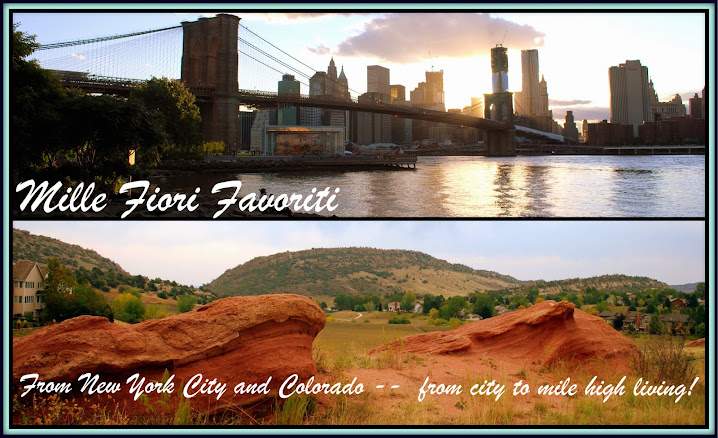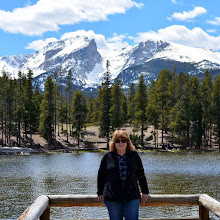Every June, around the first day of summer, my husband and I anxiously await word that the road leading to the summit of Mt. Evans is re-opened for the season. As soon as we can, we take a drive up this beautiful mountain to see its sights and renew our spirits after a long winter. We first visited Mt Evans the year we moved to Colorado--to see my post about that click here. My husband and I found the drive up a little scary then, but happily, now my husband is an experienced mountain driver and I leave that task to him while I take photos!
Mt, Evans is not Colorado's highest mountain--that honor belongs to Mt Elbert at 14,400-foot altitude (4401.2 m), but at 14,260 feet altitude (4,346.5 m) it is the highest mountain in the Denver area. It also contains North America's Highest Auto Road.
We made our trip up this season on June 21, and there was still quite a bit of snow along the drive. Click on all photos and photo collages in this post to enlarge them for easier viewing.
The views from the parking area are spectacular--we could see for many miles! Mountain range upon mountain range looms in the distance.
This view was looking toward the Denver area.
As we started to walk the switchback trail to reach the true summit my husband could not resist making a few snowballs! The temperature in Denver the day of our drive up Mt Evans was over 90 degrees, but at the mountain summit, it was only 55 degrees.
We found that the trail up to the top was blocked by snow. We saw some people scurrying over the boulders to climb up, but we did not want to take a chance to try doing that. It might be dangerously slippery going up and down that way, and we also remembered a person was severely injured this past spring when a boulder moved and fell on her on North Table Mountain and crushed her legs.
So, instead of climbing we just admired the view a little longer..,
...and had fun watching Mt Evans Mountain Goats...
...and Bighorn Sheep.
I especially love watching the newborn goat kids!
We began to drive down Mt Evans and stopped at a pullout slightly below the parking area so that I could take this photo of 14,065 foot (4287 m) Mt Bierstadt in the distance.
I also saw many delightful alpine flowers beginning to bloom here!
These Alpine Forget-Me-Nots wildflowers were so teeny tiny and so beautiful!
Click on to enlarge to read the sign.
We went further down and stopped at Summit Lake which is a natural formed glacial lake at 12,836 feet altitude (3,912). Summit Lake Park is the highest Park in the country and Denver's only treeless park. I love walking around the trails in this area.
On our visit on June 21, much of the lake was still frozen.
Even so, when we walked to the edge of Summit Lake...
...I saw wildflowers in bloom right next to the icy cold water!
The wildflowers along the tundra trails of Summit Lake are prolific, and many are varieties that are not seen anywhere else outside the Arctic Circle!
The "Alpine Spring Beauty"--Claytona Megarhiza-is one of my favorites. It is from the purslane family. It can have a tap root that is many feet deep in order for it to get the water and nutrients it needs.
After leaving Summit Lake we continued to drive down to a lower elevation of Mt Evans, but we were still above the tree line.
We were approaching another favorite area, Mt. Goliath, where the trees are all "krummholz," which means twisted, bent deformed. The trees at sub-alpine weather are exposed to severe snow, wind and freezing temperatures, and must be very strong to survive. In my next blog post, I'll show the Bristlecone Pine trees in this area that are over 1,600 years old!
You can also find me on










































































